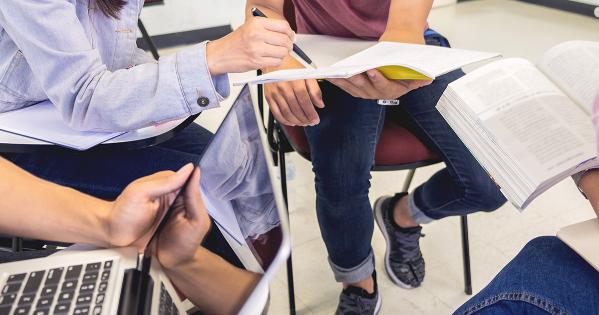The Power of Storytelling for Adult English Language Learners

At DC’s Family Place Public Charter School, stories are coming to life in two English language classes for adult learners, taught by AU TESOL alumni Debora Amidani and Carlye Stevens.
One 91-year-old student from El Salvador wrote a series of vignettes about his life: “When I lived in New Jersey, the man went to the moon. I went to Manhattan to see the people celebrate along 5th Avenue. I saw the people throw confetti. They were happy people.”
Another student from El Salvador, a woman in her seventies who attended class with her daughter, created a digital story filled with photos of her native country’s beaches and volcanoes. She wrote about her joy in attending school in the United States, and how DC’s Fort Totten neighborhood has become her new home: “I love El Salvador and the United States. I am a citizen of two beautiful countries.”
A student in her twenties described the hardships she encountered when she first arrived in the United States. “I remember that I was hungry and did not know how to buy food. And when I got sick, I didn’t know how to say what was wrong,” she wrote. “The days passed, and the years and insecurities grew in me until I decided to be the difference. I decided to study English in this school The Family Place.”
This student, a musician who plays the guitar and sings for her church, filled her digital story with music.
These narratives were written as part of a digital storytelling project initiated by Polina Vinogradova, the Hurst Senior Professorial Lecturer in AU’s Department of World Languages and Cultures. Vinogradova first became interested in digital storytelling – integrating writing with visual imagery – when she wrote her doctoral dissertation on the subject in 2011. Since then, she’s observed how digital storytelling engages students: they use multiple languages to tell their stories, improve their language and grammar skills, and develop new digital literacy skills. Vinogradova continues to study how digital storytelling projects can be used in English language education to promote multilingualism, creativity, and student and teacher agency.
Last spring, Vinogradova reached out to former students Amidani and Stevens to see if they might like to incorporate digital storytelling into their classrooms at The Family Place, which works to improve the literacy and workplace skills of adults who want to learn English. Amidani and Stevens welcomed the idea.
The Power of Storytelling and Learning
Both teachers had concerns that students might not have the technology skills to succeed. They worked with the school’s technology instructor to integrate one-hour technology classes into their curriculums. Students learned everything from typing, to working with PowerPoint, to manipulating photos, illustrations, and videos.
At the same time, Amidani and Stevens began teaching their classes how to write personal stories, which was challenging for some students who had never been asked before to write about their lives and emotions. Amidani and Stevens developed classroom exercises and worked with students to analyze personal narratives — and even how to use the pronouns “I” and “we.” Then the students started writing.
Exploring What Learners Can Do
Vinogradova points out that many students had families and jobs — some juggle several jobs at once – and regular attendance can be challenging. “Yet everyone kept coming to class, and some of the most reserved students came alive during the project,” she says. “The class was bubbling with energy. Everybody was working, asking questions, developing their narratives, looking for images. More technologically savvy students helped others.”
Amidani agrees. “Students were really proud of themselves and wanted to have the videos on their phones to show other people outside the school," she says. “Language wise, they learned and practiced the mechanics of writing (punctuation, spelling, capitalization), new words in English and some grammar points, everything in real-life, meaningful context, which is what we teachers are always looking for.”
For Vinogradova, the project was special because it allowed her to collaborate with her former students as colleagues. “It was amazing to see what caring and thoughtful educators they are,” she says. “It was also important to do this project with English learners who usually don't get to do creative projects with technology because their literacy skills are perceived as too low, and teachers often focus on what they cannot do instead of opening possibilities and exploring what they can do.”
